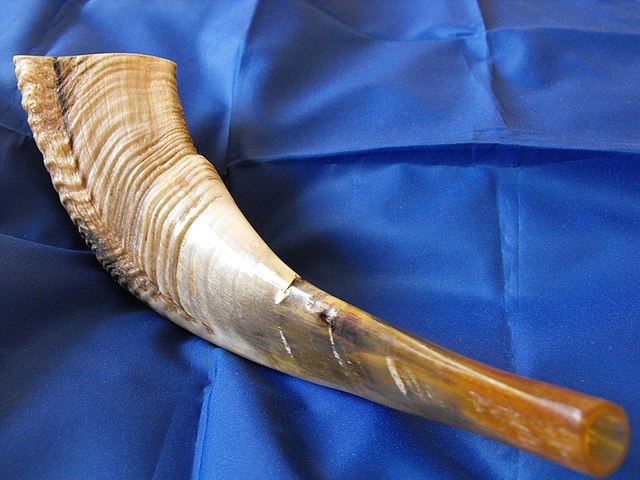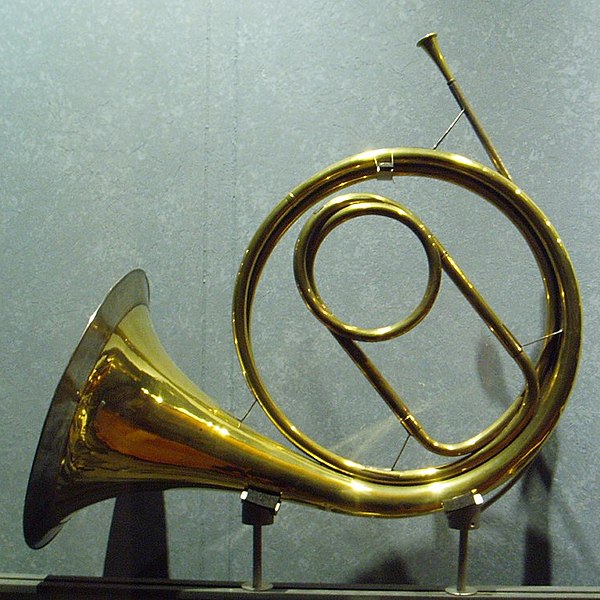A shofar is an ancient musical horn typically made of a ram's horn, used for Jewish religious purposes. Like the modern bugle, the shofar lacks pitch-altering devices, with all pitch control done by varying the player's embouchure. The shofar is blown in synagogue services on Rosh Hashanah and at the end of Yom Kippur; it is also blown every weekday morning in the month of Elul running up to Rosh Hashanah. Shofars come in a variety of sizes and shapes, depending on the choice of animal and level of finish.
Shofar
Shofar
Blowing the shofar.
Shofar (by Alphonse Lévy [fr] Caption says: "To a good year".
A horn is any of a family of musical instruments made of a tube, usually made of metal and often curved in various ways, with one narrow end into which the musician blows, and a wide end from which sound emerges. In horns, unlike some other brass instruments such as the trumpet, the bore gradually increases in width through most of its length—that is to say, it is conical rather than cylindrical. In jazz and popular-music contexts, the word may be used loosely to refer to any wind instrument, and a section of brass or woodwind instruments, or a mixture of the two, is called a horn section in these contexts.
A natural horn, with central crook: a cor solo, Raoux, Paris, 1797
Army signal horn, (cornu), Roman period; found in Alphen aan den Rijn, the Netherlands
An instrument for creating sound made from the horn of an animal
Olifant, possibly southern Italian, 11th century




![Shofar (by Alphonse Lévy [fr] Caption says: "To a good year".](https://upload.wikimedia.org/wikipedia/commons/thumb/e/ea/AlphonseL%C3%A9vy_Shofar.jpg/334px-AlphonseL%C3%A9vy_Shofar.jpg)



